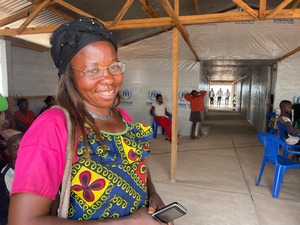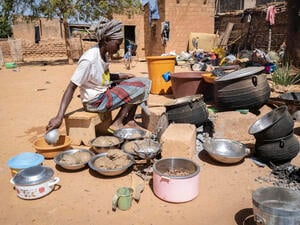Timor: militias hindering returns
Timor: militias hindering returns
UNHCR staff attempting to determine who among the refugees in West Timor want to return to East Timor are encountering difficulties as they enter camps dominated by Timorese forces seeking integration with Indonesia. Staff who went to one camp in the Atambua area along the border with East Timor on Monday had a hostile reception from militias that required police intervention.
Today, UNHCR staff from Kupang, the capital of West Timor, fanned out to Soe, 80 kilometres to the north-east, to look into the situation of more than 6,000 refugees in three camps there. Also today, a UNHCR team went to Kefamenanu, 120 kilometres north-east of Kupang, at the edge of Ambeno, an East Timor enclave within West Timor. An estimated 50,000 people fled Ambeno after the August 30 referendum and the ensuing violence in East Timor.
As refugees in camps under the supervision of churches have repatriated, UNHCR staff are now dealing with Timorese who are undecided about returns or are under the grip of integrationist forces. The Indonesian government says there are still 219,000 refugees in West Timor, up to 70 percent of whom wish to return.
Meanwhile, refugees continued to gather at reception centres in Kupang and Atambua for repatriation. Today, two ferries chartered by IOM transported 849 refugees to Dili from Atapupu, located 20 kilometres north of Atambua. UNHCR also continued airlift flights to Dili from Kupang, transporting 443 in five Transall C160 rotations today.
As of yesterday, the UNHCR office in Dili reports 36,800 returns from West Timor and other parts of the Indonesian archipelago. The figure includes 12,700 who returned spontaneously from camps in West Timor. UNHCR staff in Dili expect that with the completion of Indonesia's military departure from East Timor an estimated 250,000 to 300,000 displaced will come down from the hills, requiring food and other relief materials in the central highland, the coastal road area and the eastern section of the territory.







